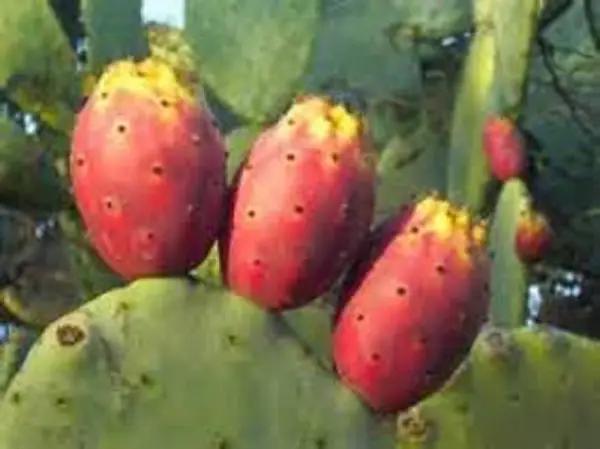Italian Prickle Pears
Italian Prickle Pears
Cactus Fruit

The prickly pear cactus has been used for centuries both as a food source and a natural fence that keeps in livestock and marks the boundaries of family lands. They are incredibly resilient and often grow back.
Opuntia ficus-indica – A variety of Cactus Fruit flourishes in areas with a suitable climate, such as southern Italy and Sicily (where they are referred to as fichi d’India or ficurinnia), and Sardinia (where they are called figumorisca – Moorish figs), southern Portugal and Madeira (where they are called tabaibo, figo tuno or “Indian figs”), Andalusia, Spain ( where they are known as higos chumbos). InGreece, it grows in such places as the Peloponnese region, Ionian Islands, orCrete, and its figs are known as frangosyka (Frankish, i.e. Western European, figs) or pavlosyka (Paul’s figs), depending on the region. In Albania, they are called fiq deti translated as ‘sea figs’, and are present in the south-west shore. The figs are also grown in Cyprus, where they are known as papoutsosyka or babutsa.
Prickly pears of the yellow and orange varieties are grown by the side of farms, beside railway tracks and other otherwise noncultivable land. It is sold in summer by street vendors, and is considered a refreshing fruit for that season.The Sicilian prickly pear contains betalain, betanin, and indicaxanthin, with highest levels in their fruits.
The 1975–1988 version of the coat of arms of Malta also featured a prickly pear, along with a traditional dgħajsa, a shovel and pitchfork, and the rising sun.
From Wikipedia
From You Tube
Joanne and Frank forever Celebrating Life
This site contains product affiliate links. We may receive a commission if you make a purchase after clicking on one of these links.


